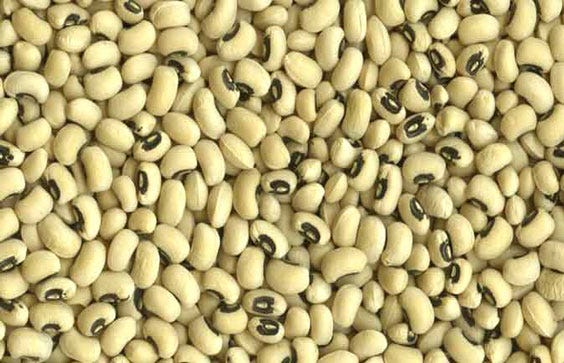My father, who came from Maine, used to say of black-eyed peas, "we fed those to the hogs where I come from." I, who am a black-eyed pea lover, say, "Then it's a damn good thing you got the hell out of Maine!"
Needless to say, his observation did not endear the Maine half of my heritage to me. Not just because of a clearly crazy, if not out-and-out perverse, attitude toward black-eyed peas. But also because Down Easter roots made me half Yankee, which, for a West Texas boy in the 1950s, was not seen as a good thing. Especially not when the infamous fact became known to the sixth grade class at George R. Bean Elementary School. It was bad enough that I was a budding little fairy, but a Yankee too!
But I stray from my clear-eyed focus on black-eyed peas. And besides, the fairy thing wouldn't really become an issue for a few years more, until mine and the other boys voices (and other things) changed in bewildering, mesmerizing ways. So for now, back to legumes.
Of course, I'm not talking about ho-hum black-eyes out of a can, which is the way they mostly manifest for city folks these days - and maybe for northern hog feeders of my father’s generation. Even he admitted he’d been wrong after he tried the real thing once in the 1960s, and then, for the rest of his life, couldn’t get enough. If all his Maine people had were the canned ones, I don't blame them for feeding them to the porkers.
Canned black-eyes are mostly pretty insipid - though they were tolerable as a side, along with fried okra and mac-&-cheese, to support the chicken fried steak with cream gravy at Furr's Cafeteria (Balanced diet? What's that?). And speaking of Furr's Cafeteria, see the watercolors I’ve included, by Houston artist Harry Worthman, done as mural studies for “Furr's Cafeteria, Caprock Center, Lubbock, Texas,” circa 1950s, where I ate many chicken fried steaks - and probably quite a few canned black-eyed peas too, though I can't say I remember those - or the murals either, being completely mesmerized back then by the chicken fry. (By and large, the focus of my mesmerization, after being diverted by those other boys for a few decades, has returned to food).
Back to the peas again. The canned ones might also be serviceable, if not cooked to a cloudy mush before canning, for that bastard dish, trying to swan above it’s station - and failing, though still pretty good if retrieved from culinary infamy by ample doses of FRESH jalapeño - known as Cowboy Caviar. Though I’m sure any cowboy who admitted to eating a dish of that name would have been stripped of his chaps on the spot. (For some of us this may bring back a lingering fantasy of those mesmerizing boys who have now been replaced, once again, by other, perhaps more delectable, and certainly more available, edible delights.)
But the black-eyed peas of my dreams, the ones I remember, even after 60, 70 years, with a longing that makes my eyes roll back and my mouth water, are not the canned ones, or the dried ones, or even the frozen ones. They are the black-eyed peas we picked in the field right over there, in the Texas Panhandle, in the early morning, right after breakfast, the biscuits&sorghum flavors still on my tongue, while the unpolluted air still had a drop of cool, before the shimmering sun became searing – the ones I picked myself right off the vines – including a few, but not too many, green ones that would be snaps – and put in an old aluminum pot that I clutched under my left arm so that my right hand was free for picking.
The ones we took up on the porch, once we had enough for a mess, and sat together in the shade shelling, into our individual pans so we could see who did the most, before we poured them all into one pot to take into the kitchen for cooking. What a Tom Sawyer game it was, shelling – the easy ones first, almost but not quite going over to dry, long and plump with peas, pulling the string down the whole length like unzipping a zipper when you did it all just right, and then spreading the two halves of the shell apart (prelude to those mesmerizing fantasies of later years?), and then running your thumb right down the whole length as the peas fell into the pot plop, plop, plop. Making the crucial judgement as to which of the green ones had peas mature enough to struggle over, and which were unquestionably snaps (because the green ones were not the smooth, satisfying pleasure of the others, even if there proved to be anything inside that shouldn’t really have been thrown back).
And along with shelling, the gossip, the chance for the women (it was the women on the porch, and the children – the men were off doing man things) to catch up with “news” they hadn’t been able to share since the last time everybody got together from Pampa and Amarillo and Lubbock, and even as far away as Abilene sometimes. News you really wouldn’t put in a letter, news about Mrs. So-and-so, who had a spell and had to spend time in the mental ward; the Whoevers who were getting a divorce because he catted around all the time; Old Man Whatsit who was a mean, mean drunk. And That One who was expecting again, didn’t she know how to keep THAT from happening, at which all the women laughed and would not explain why, even when I asked twice.
And then the pea cooking. MawMaw took care of that, of course – it was her field, her porch, her kitchen, hers and Arlie’s – who were no relation to me except somehow by marriage, which I didn’t understand, but they’d always been there. And she was the one who made the biscuits – and the snickerdoodle cookies which she gave me every Christmas, in a bag just for me.
While the peas cooked, I and two nephews and a cousin went down to the windmill to put our hands in the cool water of the tank where the horse and the cows drank. We weren’t supposed to drink out of it ourselves, so of course we did, when the men weren’t looking. For sure, they never knew.
And then to the orchard to see if anything was ripe: maybe some peaches or early apples. Or something called quinces, though I didn’t have any idea what those were. The cherries were all gone; “the birds mostly got them this year.”
Oh, that smell of fresh cooked black-eyed peas when we went back to the kitchen for lunch! How can I describe that? Smells are the hardest thing to turn into words: maybe like mouthwatering earthy goodness? Sometimes with the scent of salt pork, or even bacon dripping, for seasoning – but even though I was a meat lover already by then, for the peas I loved them best when they were just themselves. The rich, round, honest flavor of sandy soil, spring rain, scorching sun, transformed into utter deliciousness by scraggly vines in mounded rows of flat Texas fields. Eaten with fresh cornbread, or maybe some of those leathery leftover breakfast biscuits (MawMaw’s biscuits were not the flakey kind). And some of Joyce’s chowchow, that she made every year from cucumbers and peppers and onions that she grew in her backyard garden in town.
Oh yes, those are the black-eyed peas I dream about, long for, even after all these years. Were they ever really real? I’m sure they were; they must have been. How else could I remember them so vividly? And, Pop, I can tell you one thing for sure: I’ll be fighting those Yankee hogs for them, if it comes down to it!





